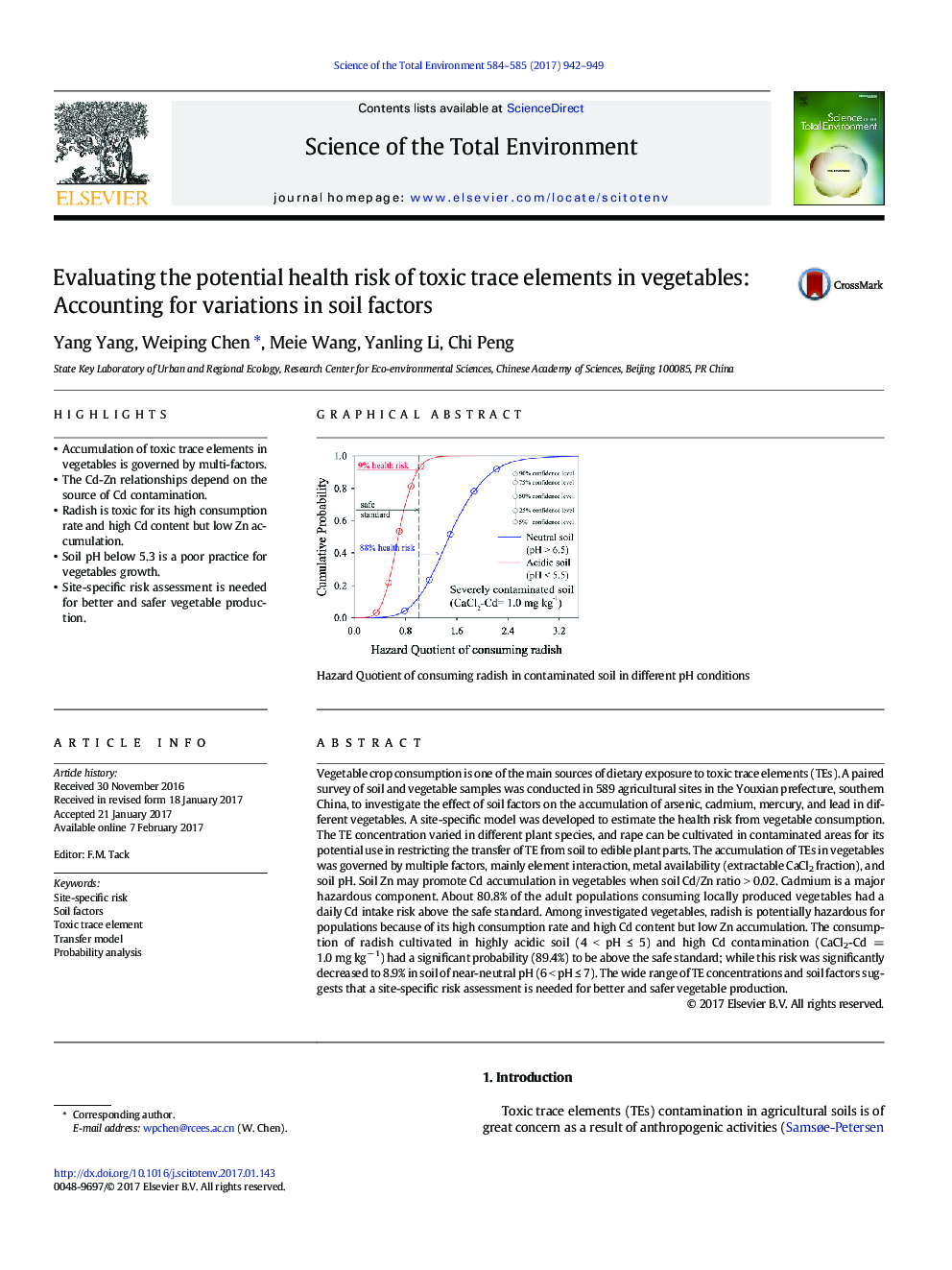| کد مقاله | کد نشریه | سال انتشار | مقاله انگلیسی | نسخه تمام متن |
|---|---|---|---|---|
| 5751933 | 1619708 | 2017 | 8 صفحه PDF | دانلود رایگان |
- Accumulation of toxic trace elements in vegetables is governed by multi-factors.
- The Cd-Zn relationships depend on the source of Cd contamination.
- Radish is toxic for its high consumption rate and high Cd content but low Zn accumulation.
- Soil pH below 5.3 is a poor practice for vegetables growth.
- Site-specific risk assessment is needed for better and safer vegetable production.
Vegetable crop consumption is one of the main sources of dietary exposure to toxic trace elements (TEs). A paired survey of soil and vegetable samples was conducted in 589 agricultural sites in the Youxian prefecture, southern China, to investigate the effect of soil factors on the accumulation of arsenic, cadmium, mercury, and lead in different vegetables. A site-specific model was developed to estimate the health risk from vegetable consumption. The TE concentration varied in different plant species, and rape can be cultivated in contaminated areas for its potential use in restricting the transfer of TE from soil to edible plant parts. The accumulation of TEs in vegetables was governed by multiple factors, mainly element interaction, metal availability (extractable CaCl2 fraction), and soil pH. Soil Zn may promote Cd accumulation in vegetables when soil Cd/Zn ratio > 0.02. Cadmium is a major hazardous component. About 80.8% of the adult populations consuming locally produced vegetables had a daily Cd intake risk above the safe standard. Among investigated vegetables, radish is potentially hazardous for populations because of its high consumption rate and high Cd content but low Zn accumulation. The consumption of radish cultivated in highly acidic soil (4 < pH â¤Â 5) and high Cd contamination (CaCl2-Cd = 1.0 mg kgâ 1) had a significant probability (89.4%) to be above the safe standard; while this risk was significantly decreased to 8.9% in soil of near-neutral pH (6 < pH â¤Â 7). The wide range of TE concentrations and soil factors suggests that a site-specific risk assessment is needed for better and safer vegetable production.
Hazard Quotient of consuming radish in contaminated soil in different pH conditionsThe health risk via radish consumption had a significant decrease if the pH of Cd-contaminated soil is near neutral.179
Journal: Science of The Total Environment - Volumes 584â585, 15 April 2017, Pages 942-949
